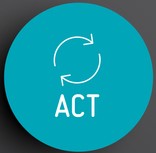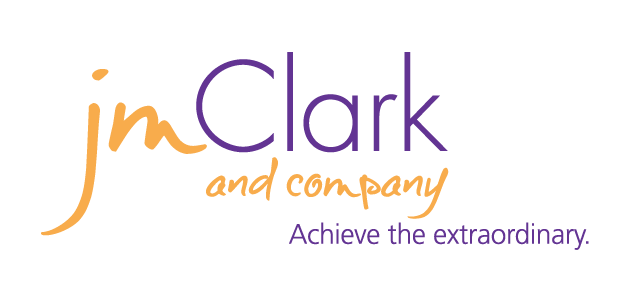
You’ve Established Your Goals… Now What?
The process that is used to set personal or professional goals has many similarities.
As you read and reflect on the following, ask yourself where are you with your goals… what’s next?
If you’ve already established your goals, congratulations!!!
By now you have hopefully:
- started with the end in mind
- ensured that you and your boss are on the same page
- contemplated what you/your team could do to make the biggest impact in the coming year
- asked for your team’s input, had meaningful dialogue, and made some subsequent changes
- rolled out the coming year’s goals which have been created to ensure that your team’s individual goals, actions and efforts are aligned with the big picture
You laid out a PLAN to achieve desired results and to empower your team members in their day-to-day activities. A plan, that when implemented, will help each of you acknowledge and appreciate your accomplishments and successes.
Last but not least… a Plan to help your boss recognize how much value you and the team have added in the past year…. Congratulations!
The good news is that the “heavy lift” is over… the bad news is that, like a garden, if you don’t tend to it properly, all this effort could be for nothing.
If you have ever raised a garden, then you know that it is not a plant-and-let-it-go job. Gardening is a labor of love, AND that the results are completely worth the effort!
For maximum results, the gardener has to do their homework to find just the right location, assess what the soil needs, determine what fruits, vegetables and flowers are best suited for the climate, sunlight and rainfall.
 A good gardener also anticipates what little creatures may want a nibble or two, and what needs to be done to “secure” the garden. This first phase of gardening is the “P” phase of PLAN, which identifies and understands the problem or opportunity.
A good gardener also anticipates what little creatures may want a nibble or two, and what needs to be done to “secure” the garden. This first phase of gardening is the “P” phase of PLAN, which identifies and understands the problem or opportunity.
 After the “P” phase, the next step is the “DO” phase. A potential solution has been identified and it’s time to check it out. This phase of gardening includes the actual tilling of the soil, planting, fertilizing, and putting up a fence to keep bunnies and deer out!
After the “P” phase, the next step is the “DO” phase. A potential solution has been identified and it’s time to check it out. This phase of gardening includes the actual tilling of the soil, planting, fertilizing, and putting up a fence to keep bunnies and deer out!
 Next comes the “CHECK” phase where results are analyzed and compared against the plan to assess whether the idea was a success. For example, checking to make sure the garden is getting the right amount of water, sunlight and fertilizer, and that weeds aren’t taking over.
Next comes the “CHECK” phase where results are analyzed and compared against the plan to assess whether the idea was a success. For example, checking to make sure the garden is getting the right amount of water, sunlight and fertilizer, and that weeds aren’t taking over.
 The next phase is “ACT.” As the improved/proven process becomes the new baseline, we continue to look for ways to make it even better.
The next phase is “ACT.” As the improved/proven process becomes the new baseline, we continue to look for ways to make it even better.
PDCA, which stands for Plan, Do, Check, and Act is often used in the business world.
PDCA is a loop, not a linear process, with a beginning and an end, and it enables us to continuously improve.
PDCA is an iterative design and management method for the control and continuous improvement of processes and products.
So, what does gardening have to do with staying on track with goals? Just as we used the PDCA process to identify actions to ensure a healthy and productive garden, you can use the PDCA process to ensure you and your team are on track with stated goals.
These include: sharing updates; highlighting potential obstacles; identifying help needed; and adjusting goals without starting all over again.
Here are a few actions that as a leader you can do to ensure you achieve the goals you so thoughtfully created.
DO:
- Be specific regarding end results, time frames, expected levels of effort, and communication.
- Check for understanding and get a commitment.
- Follow up in writing to clarify agreements and next steps.
CHECK:
- Establish a standard format for each person’s workplans.
- Create a central place for updates and communicate when updates are to be entered.
- Have regular and consistent goal review meetings. There may be items that the whole team needs to know about. If so, I would recommend meeting at least monthly. Set the schedule for the entire year on everyone’s calendar. There may be items that need to be discussed only with the individual and you. This follow-up can be folded into an existing meeting.
- Items to focus on in both types of meetings are:
- Status of the goal (on track, successes, encountering obstacles, expected delays, etc.).
- Reasons for any change in status, impact on goal, and help needed.
ACT:
- Always acknowledge good performance. Show appreciation.
- Provide visibility by sharing goals, your team’s efforts and successes with others.
- Revise goals only when necessary.
William Moulton Marsden tells us to “Realize what we really want, because it stops us from chasing butterflies and puts us to work digging gold.”
Even though chasing butterflies can be fun and highly entertaining, today’s business environment requires us to Go for the Gold… the PDCA process gives us that continuous improvement focus we need.
Like what you’ve just read? Sign up now and get JC’s Corner emailed to you every month at no charge. Just send your name and email address to success@jmclark.com and we’ll add you to our subscriber list.




Lorsque vous essayez d’espionner le téléphone de quelqu’un, vous devez vous assurer que le logiciel n’est pas trouvé par eux une fois qu’il est installé.
Lorsque vous oubliez le mot de passe pour verrouiller l’écran, si vous n’entrez pas le mot de passe correct, il sera difficile de le déverrouiller et d’y accéder. Si vous trouvez que votre petit ami / petite amie est suspect, vous avez peut-être pensé à pirater son téléphone Samsung pour obtenir plus de preuves. Ici, nous vous fournirons la meilleure solution pour déchiffrer le mot de passe du téléphone mobile Samsung.